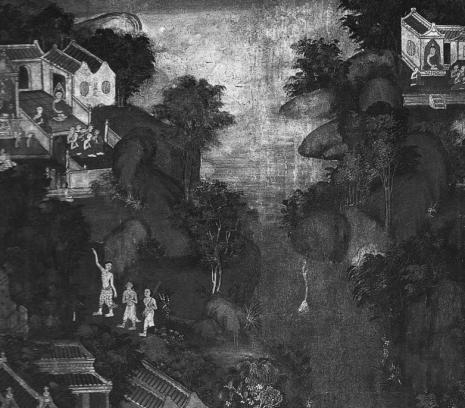A Comparative Study of the Role and Meaning of Landscape in Mural Paintings from Late Ayuthya to Early Rattanakosin Period
DOI:
https://doi.org/10.69598/sbjfa130894Keywords:
Mural Painting, Landscape Painting, Early Rattanosin Period, Late Ayuthya PeriodAbstract
This article is a comparative study on the roles and meanings of landscape in mural paintings from the late Ayutthaya period to the early Rattanakosin period. Data was collected from ten temples that altogether have 145 mural paintings, and analyzed in order to find the specific characters of landscape composition, the roles and meanings of landscape in mural paintings of each period. It is found out that landscape paintings during the late Ayutthaya period to the early Rattanakosin period can be divided into seven categories: 1. the presentation of symbolic forest in room separated by Sintao lines 2. The forest is the upper part of the mural 3. The forest scene covers the whole wall as obliged by the story 4. One building is surrounded by landscape 5. Two significant buildings are presented and landscape covers from the upper to the lower part of the wall 6. Landscape covers from the upper to the center part of the mural and surrounds the building in the upper part and 7. Buildings are in zigzag direction and landscape covers from the upper to the lower part of the mural. Seven types of landscape mainly used to present the story of Buddha’s life. Moreover, painters in each period designed different landscapes. They were inspired by previous periods.
Downloads

Downloads
Published
How to Cite
Issue
Section
License
The journal's editorial team does not have to agree with the views and comments in the author's article, nor are they responsible for the comments.











